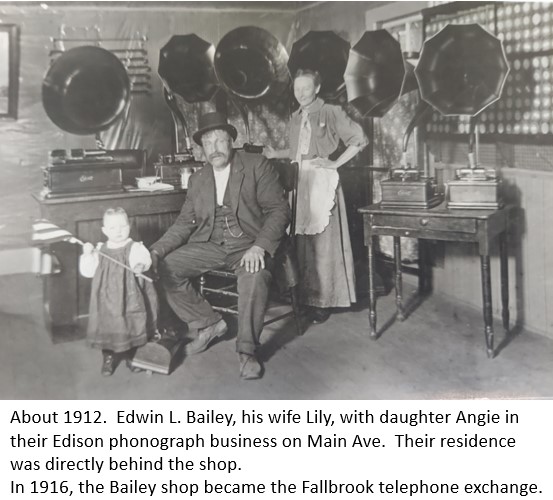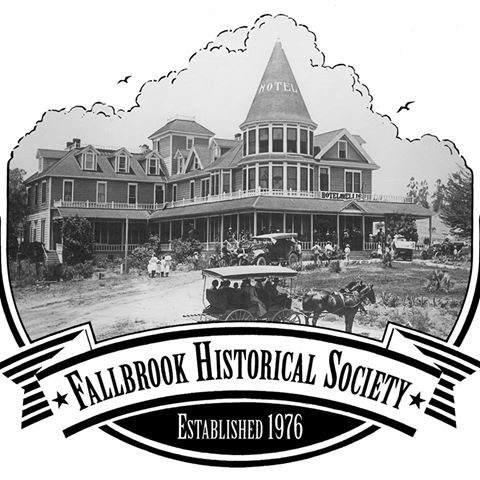The long single-story building near the northeast corner of Fig Street and Main was the original telephone exchange for Fallbrook. The building at 228-132 S. Main Ave is estimated to have been built about 1890 because it is shown on an 1890 Sanborn Insurance map of the town and there is a record the dwelling being owned in 1893 by Wilmer D. Wright, a mining engineer.


After the Wrights moved away, the building went through a series of owners and tenants, including A.J. Clark, the town banker, then Alonzo Bell, a Civil War veteran, and years later a couple of different residents who were contracted to operate the telephone exchange.

The first telephone service came to Fallbrook in October 1905 with a telephone line in that was owned by George Westfall. It ran from his hardware store to the train station in the Santa Margarita canyon. About 20 townspeople all shared the same line and each answered to a different coded ring. In those days, subscribers installed their own lines (called Farmer lines) from their place to the exchange. Subscribers were responsible for maintenance of the line. In 1911 an additional line was run to Red Mountain, adding several more subscribers.
Edwin L. Bailey and his wife Lily bought the building at Fig and Main in 1915. Bailey already had a business there selling phonographs and records. The next year Bailey became the Fallbrook agent for the Southern California Telephone Co. a precursor to Pacific Telephone.

The telephone office and switchboard were in the front part of the Bailey residence. Since so few people had telephone service when Bailey became the agent, he often found himself delivering and receiving messages to pass on. Because non-subscribers were using friends or neighbors phones, the Baileys couldn’t help knowing where everyone was and much that was going on.

In those early days before electricity came to town, a telephone was physically large because it contained a magneto. A caller would wind it up like a coffee grinder to generate enough electricity to send a ring to the central switchboard. The operator, one of the Bailey family, took the call and made the connection.
The Escondido office had to be connected as well so Southern California Telephone could take care of timing and complete the call. In 1915, a call was only made between 6am to 6pm. After the office closed at 6pm, a call had to wait until the next day. In 1924, the hours were extended to 10pm. For a long-distance call, the caller had to go personally to the Bailey building.
Growth of the system was slow. In 1935, there were still only 86 telephones in Fallbrook. When Edwin Bailey’s health declined and he died in 1936, his daughter Angie took over running the exchange. In 1942, dial telephones were introduced in Fallbrook, reducing the need for a Central exchange. Southern California Telephone made Angie a supervisor and transferred her to a larger exchange in Oceanside.

Tom Frew,
FHS Historian
Acknowledgements:
Much of the info on telephone history, the Bailey family, and the Palm Mortuary came from:
Fallbrook Enterprise news reports from 1911-1942.
Oceanside Blade Tribune newspaper stories in 1972, by Mimi Hodgson.
Information on the building history comes from Fallbrook Historic Resources Inventory for the County of San Diego 1991 by Susan Carrico & Kathleen Flanigan.
The 1890 Sanborn Insurance map of Fallbrook
